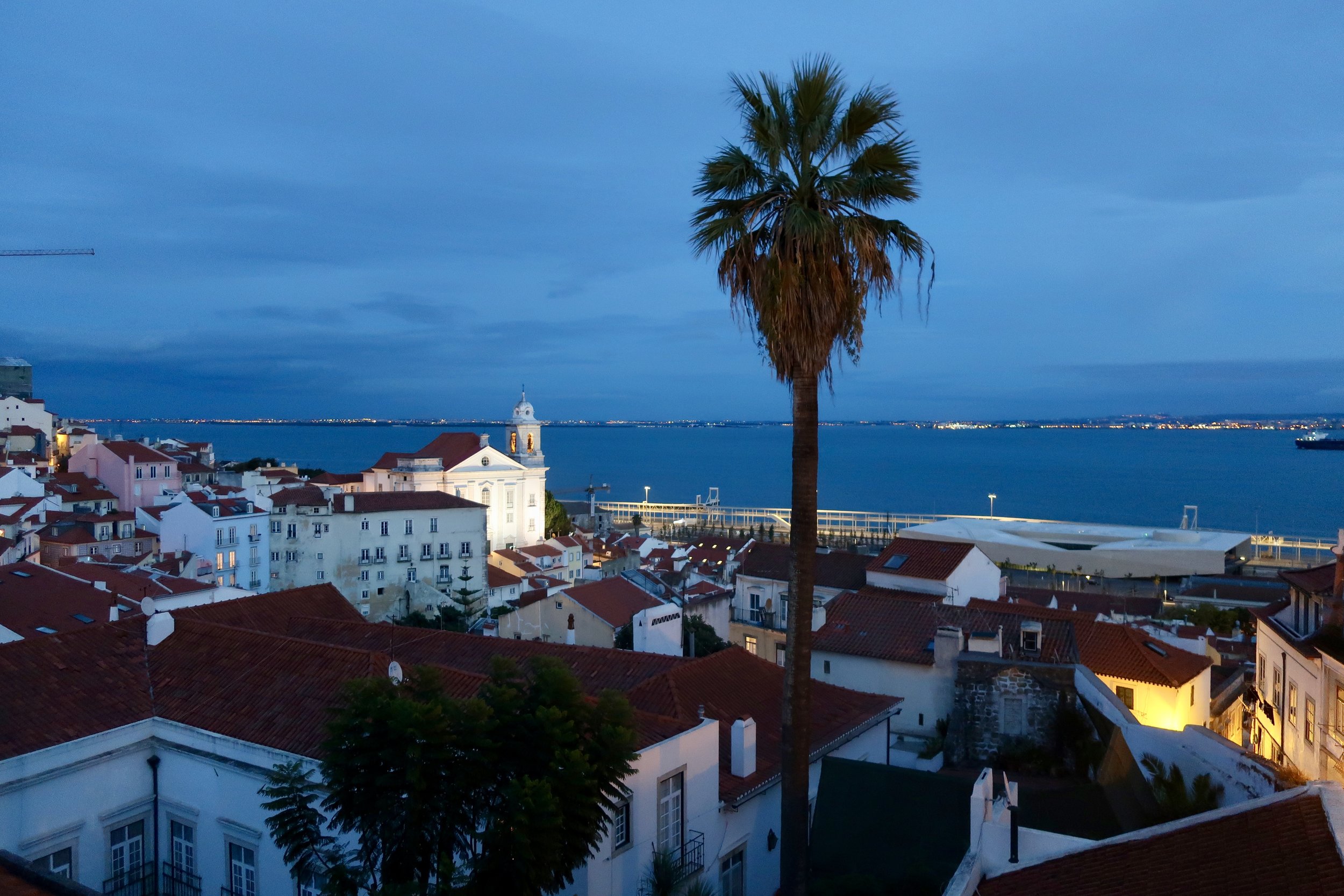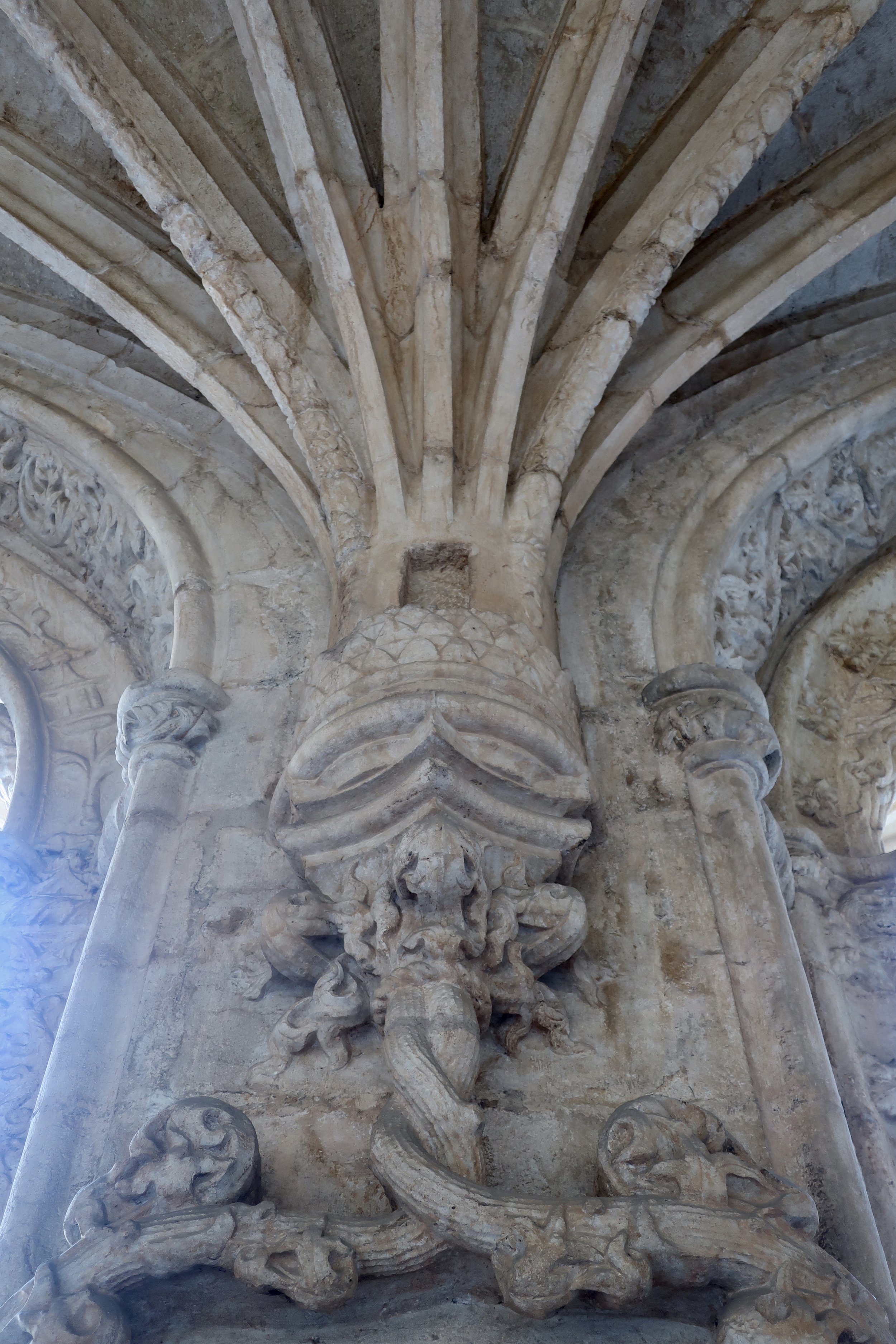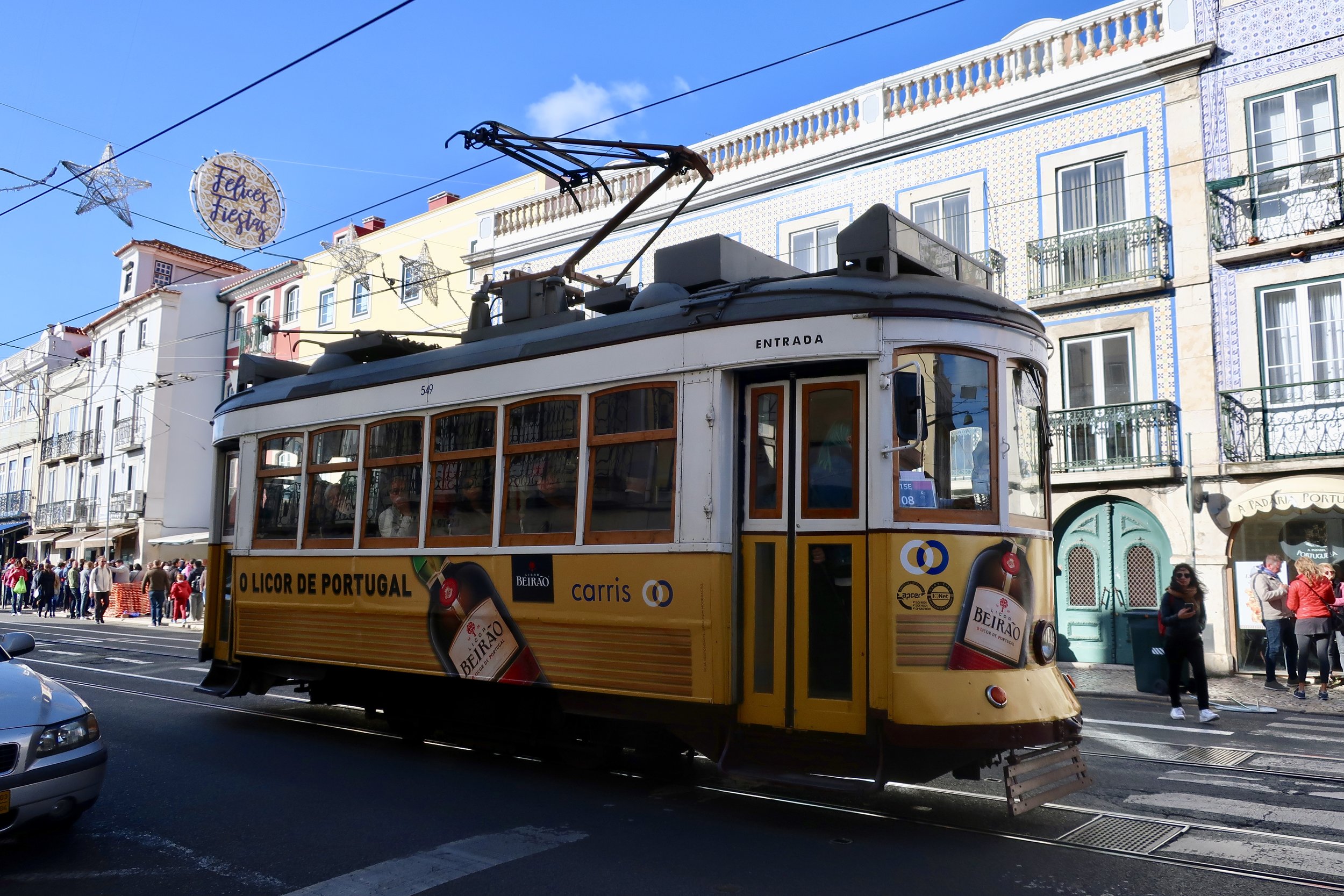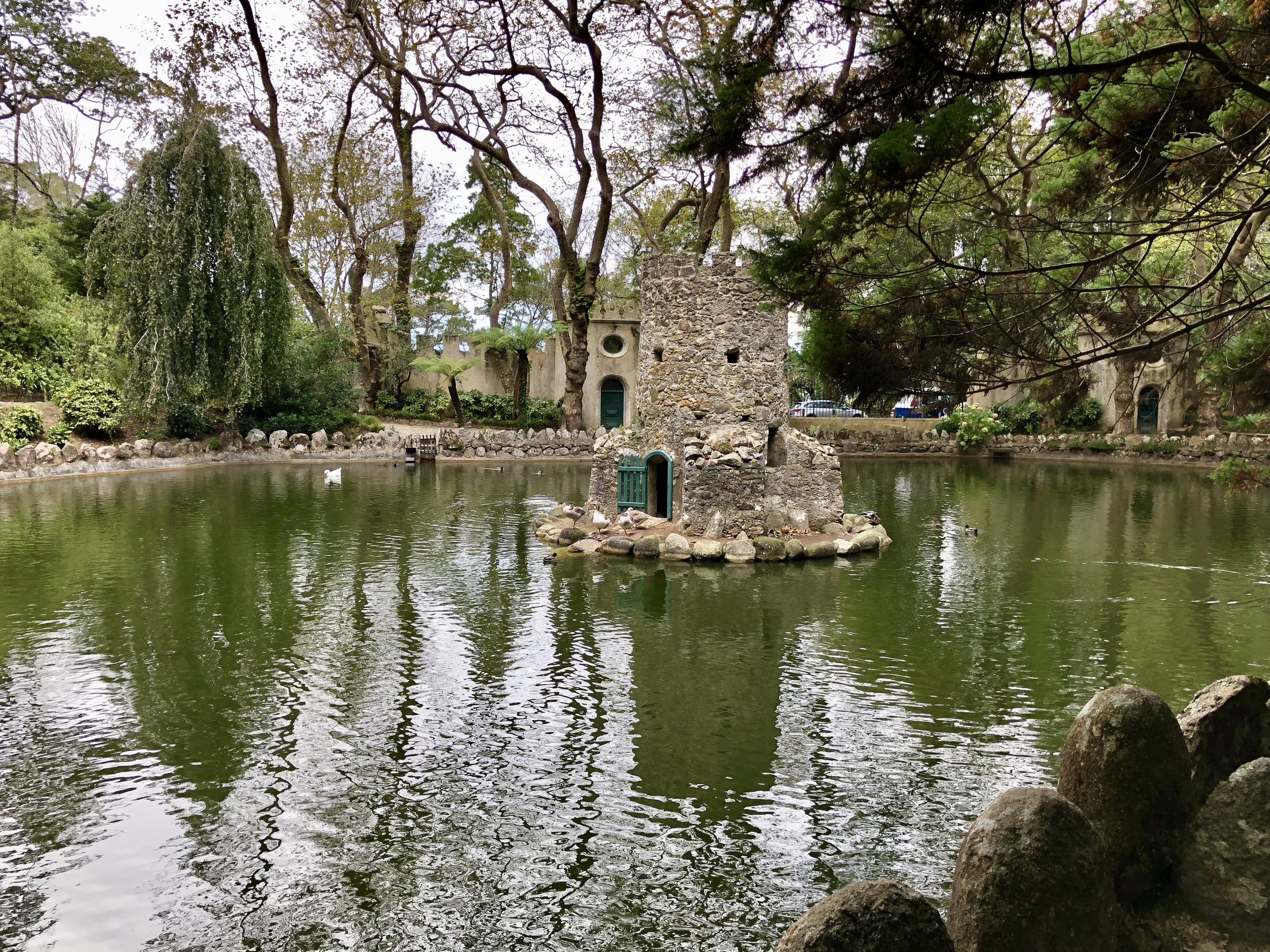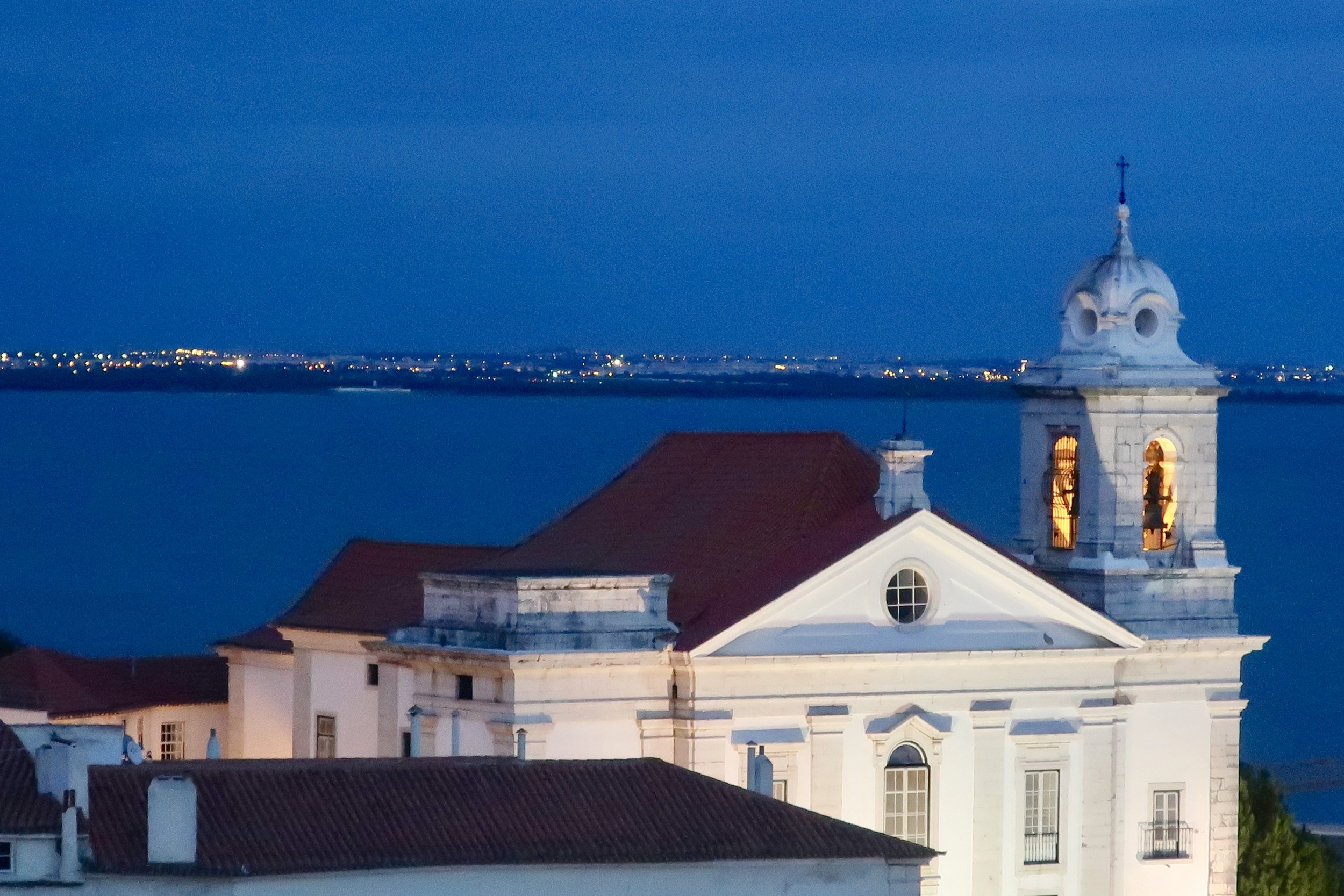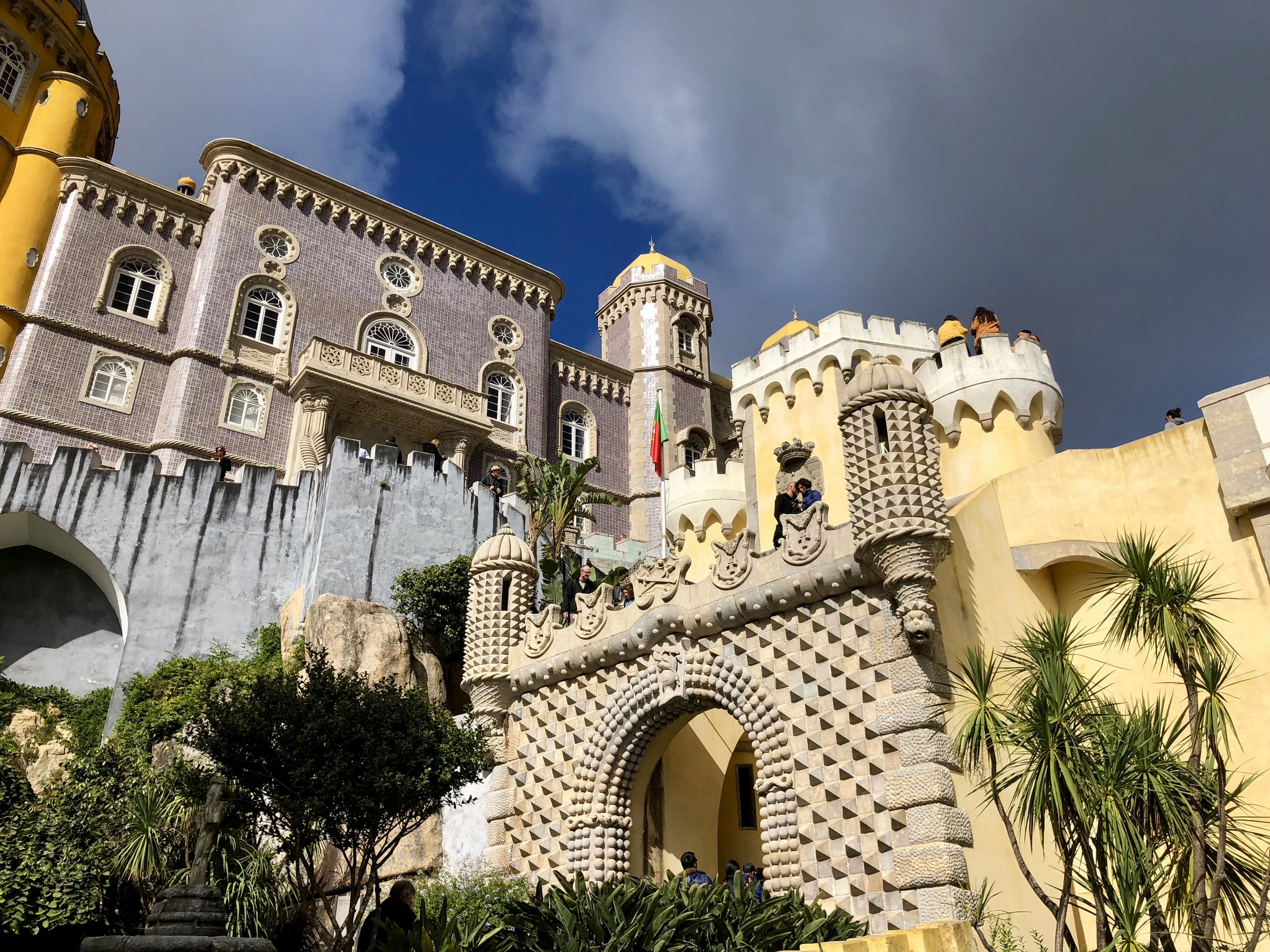Lisbon, Portugal
Lisbon was squeezed in while we were so close to Portugal, and it was well worth the couple of days we added to our trip. It is a photographer’s heaven on clear days, with its blue skies and emerald green waters as backdrop to its white houses with red-tiled roofs. And the sea reminds us that Portugal’s place in the history of discovery is a wonder. So small a country with such huge ambitions. To start in Belem was appropriate, and on that freezing cold day with strong winds, I looked up at Belem Tower, built in 1515, imagining sailors and missionaries losing sight of it as they sailed away into the unknown. This beautifully carved stone tower in Lisbon’s harbor was the last sight they saw of their country, and the first as they returned home loaded with gold and spices. Nearby along the boardwalk is the Monument to the Discoveries with Prince Henry the Navigator at the helm and Vasco da Gama and Magellan on the far side. But the jewel of Belem is the Monastery of Jeronimos where monks of St. Jerome were cloistered and sailors prayed before leaving on their voyages. Of course, monks often set out with them, aiming to convert the heathens. Francis Xavier, who co-founded the Jesuit order with Ignatius of Loyola, did much of his missionary work in Asia in the service of Portugal. (I well remember seeing an exhibit in Tokyo on Xavier and his travels to Japan, with my Uncle Hiroshi.) We found the monastery especially beautiful and peaceful. Vasco da Gama’s impressive tomb is in the church, commemorating his momentous voyage to India. As with our visits in Spain, Mark and I walked practically everywhere, starting with the high Bairro Alto neighborhood to Sao Roque, one of Portugal’s oldest Jesuit churches. The sacristy’s dark walls were covered in 17th-century paintings of St. Francis Xavier, and on display were examples of religious garments from the different countries he visited as a missionary. At a little bakery nearby, we first tasted the custard tarts that Lisbon is famous for, and later they were offered at our hotel’s happy hour with port — a favorite memory of Mark’s. Dining was exceptionally good there, and at Sacramento, the shrimp risotto and octopus rice was our favorite of the entire trip. Evenings were beautiful, again with the colors of the sky and sea. Taking a tip from a well-traveled friend of mine, we spent the next day in Sintra, another UNESCO World Heritage Site. It was the summer getaway of Portugal’s kings, and what Lord Byron called “a glorious Eden.” The hordes of tourists took away from the appeal of Pena Palace, but it was fascinating to hear that King Manuel spied Vasco da Gama returning from his voyage here, a humble monastery at the time. In celebration, he made it into the palace you see today. Mark and I began to have more fun with the hike to the ruins of the Moorish castle, dating back a thousand years and taken by the Christians in 1147. I have to say we were eager to get back to Lisbon that evening. We realized that our hotel was very close to the ruins of Convento do Carmo (remnants of the 1755 earthquake) and Elevador de Santa Justa with its sweeping rooftop views. With so much more to see, it was tough to leave Lisbon, and having to make a 5am flight to Amsterdam didn’t make it easier.














